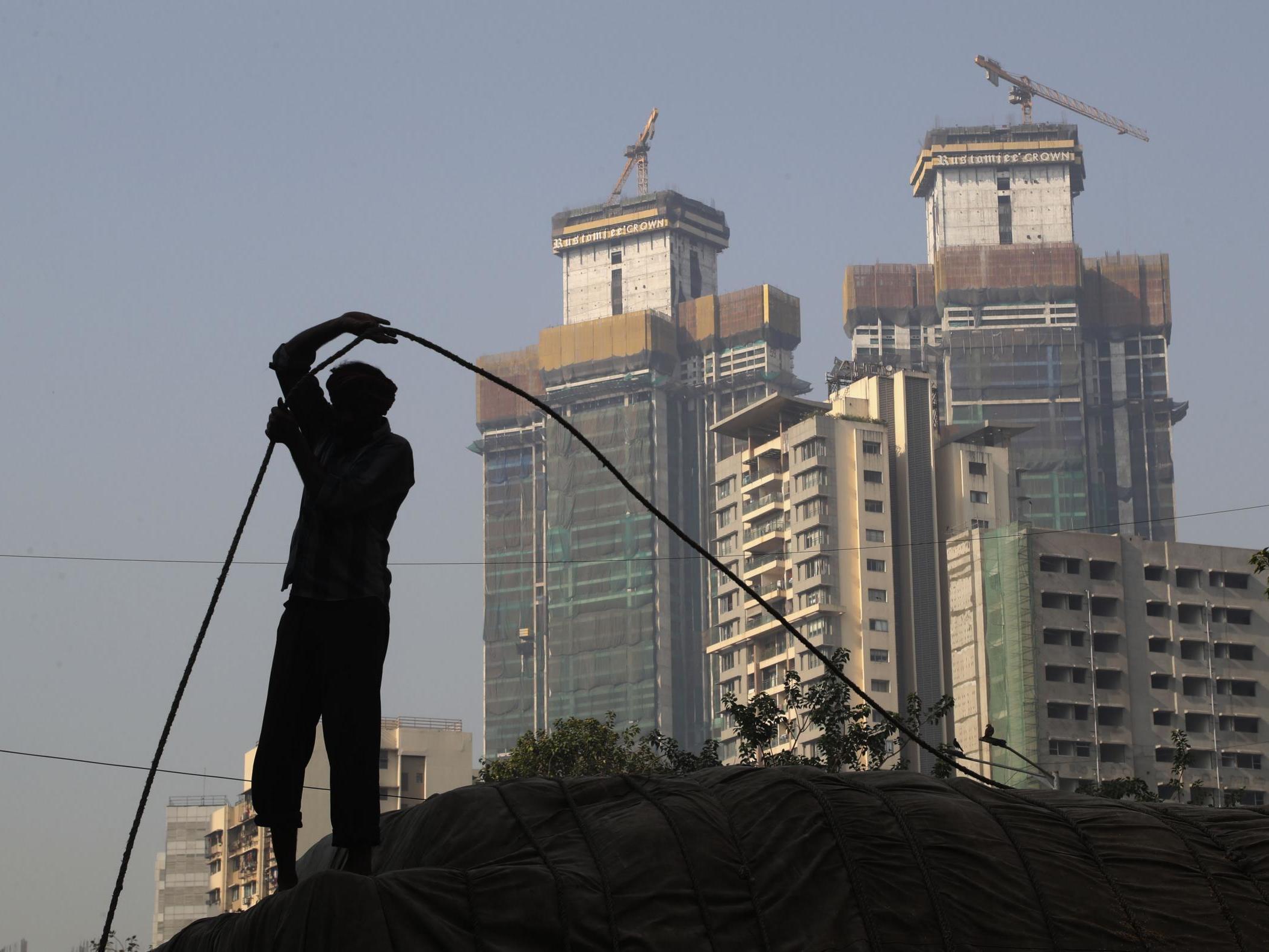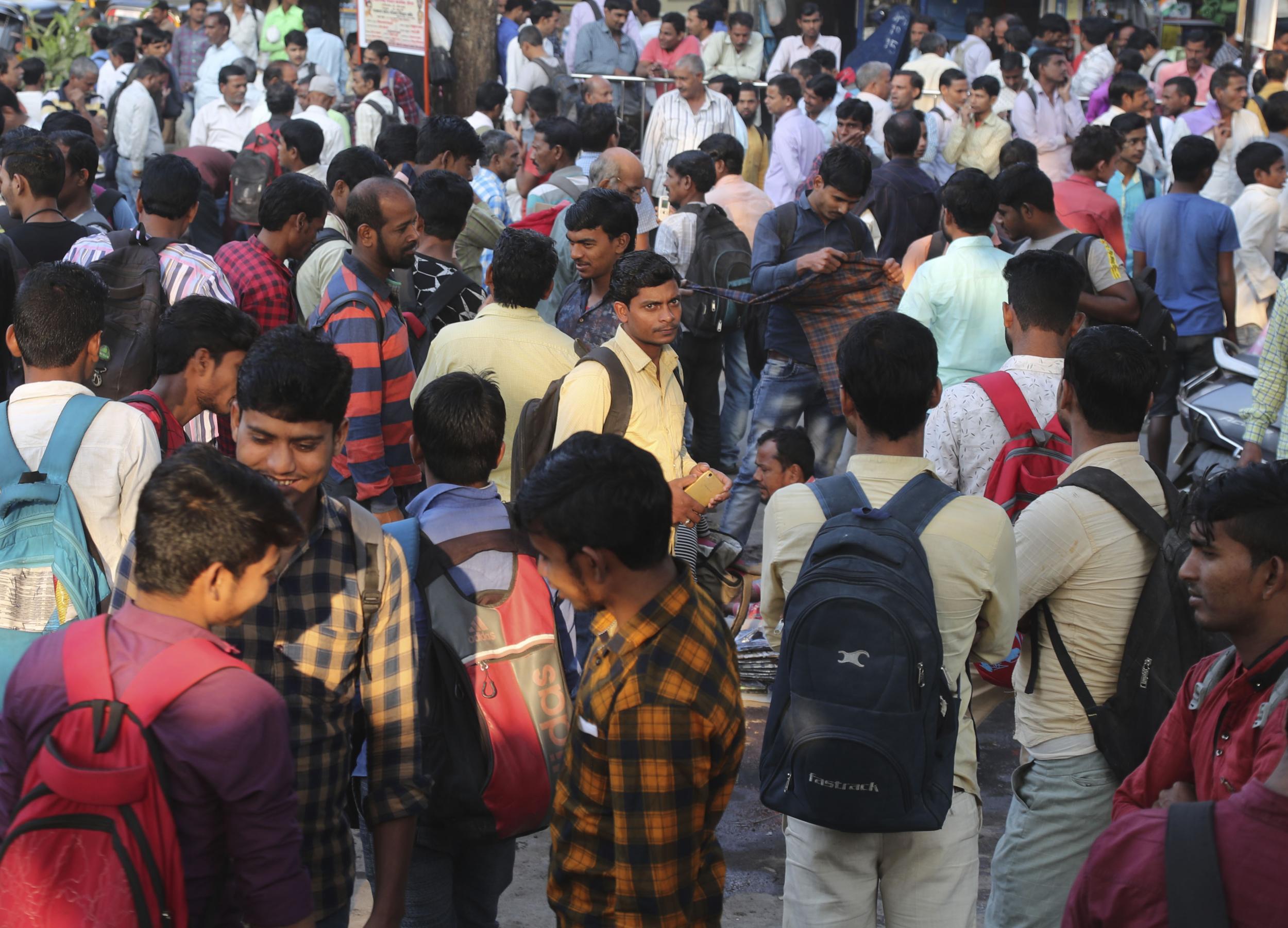India’s economy slumps as growth hits slowest pace in a decade
Output slumps to slowest pace in more than a decade

Your support helps us to tell the story
From reproductive rights to climate change to Big Tech, The Independent is on the ground when the story is developing. Whether it's investigating the financials of Elon Musk's pro-Trump PAC or producing our latest documentary, 'The A Word', which shines a light on the American women fighting for reproductive rights, we know how important it is to parse out the facts from the messaging.
At such a critical moment in US history, we need reporters on the ground. Your donation allows us to keep sending journalists to speak to both sides of the story.
The Independent is trusted by Americans across the entire political spectrum. And unlike many other quality news outlets, we choose not to lock Americans out of our reporting and analysis with paywalls. We believe quality journalism should be available to everyone, paid for by those who can afford it.
Your support makes all the difference.Faced with faltering economic growth, India's government has unveiled measures aimed at getting millions of Indians to spend and spurring companies to invest.
The task at hand is urgent: India was the world's fastest-growing major economy as recently as last year but has since ceded that spot to China. The news has worsened in recent months, with economic output in the current fiscal year expanding at the slowest pace in more than a decade.
The government on Saturday presented its annual budget, a much-anticipated exercise that serves as a manifesto for economic policy. It announced moves to cut certain taxes, encourage investment and reduce its stakes in major publicly-owned companies.
But investors looking for bold steps to power India back to faster growth were left disappointed: the country's benchmark stock index slid more than 2 per cent on Saturday.
Here's what you need to know about the predicament facing India's economy.
How badly is India's economy doing right now?
Very. While economies around the world have decelerated recently, India has slammed into a wall: in just over a year, economic growth tumbled by nearly half from a rate of 8 per cent to 4.5 per cent in the latest quarter. For a developed country, that would still be a healthy rate of expansion. But in a developing economy such as India's that hopes to pull tens of millions out of poverty and employ a young and burgeoning workforce, it feels almost like a recession.
The economic data continue to flash warning signs. The corporate and income tax collected by the government - an indicator of overall economic vitality - is set to fall during the current fiscal year for the first time in two decades, Reuters reported. The latest available nationwide figures show that unemployment spiked to a 45-year high in 2018. And leaked data from a flagship survey conducted once every five years indicated that consumer spending fell in 2018 for the first time in four decades.
India's economy is in the “intensive care unit,” said Arvind Subramanian, who served as the government's chief economic adviser for four years until 2018. “The evidence is just too large and too mutually supportive to not raise alarm bells.”
How did India get to this point?
That depends on whom you ask. The government, together with some economists, contends that India is in a temporary downturn, with economic growth suppressed by an unfavourable environment worldwide. By this line of thought, the slump will end later this year and the economy will pick up speed.
Other economists worry that there is something deeper than a cyclical slowdown at work. They say several factors - some of them years in the making - are together acting as a lead weight on the economy. India's financial sector is dealing with a bad-debt hangover in sectors such as real estate and infrastructure. Bad loans have poisoned the climate for investment, making banks unwilling to lend and companies averse to fresh borrowing.
The government of Narendra Modi, India's prime minister, made a challenging situation worse, these economists say, with its abrupt decision in 2016 to invalidate most of India's currency. The move paralysed the country's vast informal economy, which is based on cash transactions. The introduction of a nationwide value-added tax soon after - a step economists praised in principle but criticised for its botched rollout - didn't help.

The picture is “sharp and scary,” wrote R Nagaraj, an economist at the Indira Gandhi Institute for Development Research in Mumbai, earlier this month. Slower economic growth has led to job losses and stagnant wages in rural India, he said, followed by falling consumer spending. It is the “unmistakable story of [an] economy in distress.”
Economists at Goldman Sachs wrote in a note last year that the current slowdown is the longest India has experienced since at least 2006 and represents a “considerable source of anxiety” for investors.
How has Modi's government reacted to the slowdown?
Until recently, the government barely acknowledged that a slowdown was underway. In September, Nirmala Sitharaman, India's finance minister, announced corporate tax cuts that buoyed stocks and aimed to spur investment but nothing further.
Several economists said the government's primary focus has been elsewhere in recent months. In August, Modi undid seven decades of Indian policy in Kashmir. In December, his government passed a divisive citizenship law that sparked nationwide protests.
“A disproportionate amount of attention is going into politics,” said Kaushik Basu, a former chief economist at the World Bank and a professor at Cornell University. “The economy is feeling the neglect and that worries investors.”
What happens next?
Professor Basu said Mr Sitharaman faces a dilemma. The economy needs a jolt of stimulus in the form of higher government spending, but any significant move in that direction risks enlarging the gap between public spending and tax revenue.
“It's a very dangerous game, but I don't think she has a choice,” he said. Mr Sitharaman needs to put “more buying power in people's hands, which could mean that the fiscal deficit that was going to be reined in will not be reined in.”
Amit Basole, an economist at Azim Premji University in Bangalore, said the situation was serious enough that “now is really the time to be concerned about the real economy, not the fiscal deficit.” He urged an expansion of a government program to guarantee jobs in rural areas to get those consumers to spend.
Mr Subramanian, the former chief economic adviser, said the government could start with a more limited set of goals: fixing the jam in the financial system and ensuring the reliability of government statistics so policymakers can properly assess the scope of the problem. On spending, “the government just doesn't have the space to do anything dramatic or drastic,” he said.
The Washington Post
Join our commenting forum
Join thought-provoking conversations, follow other Independent readers and see their replies
Comments